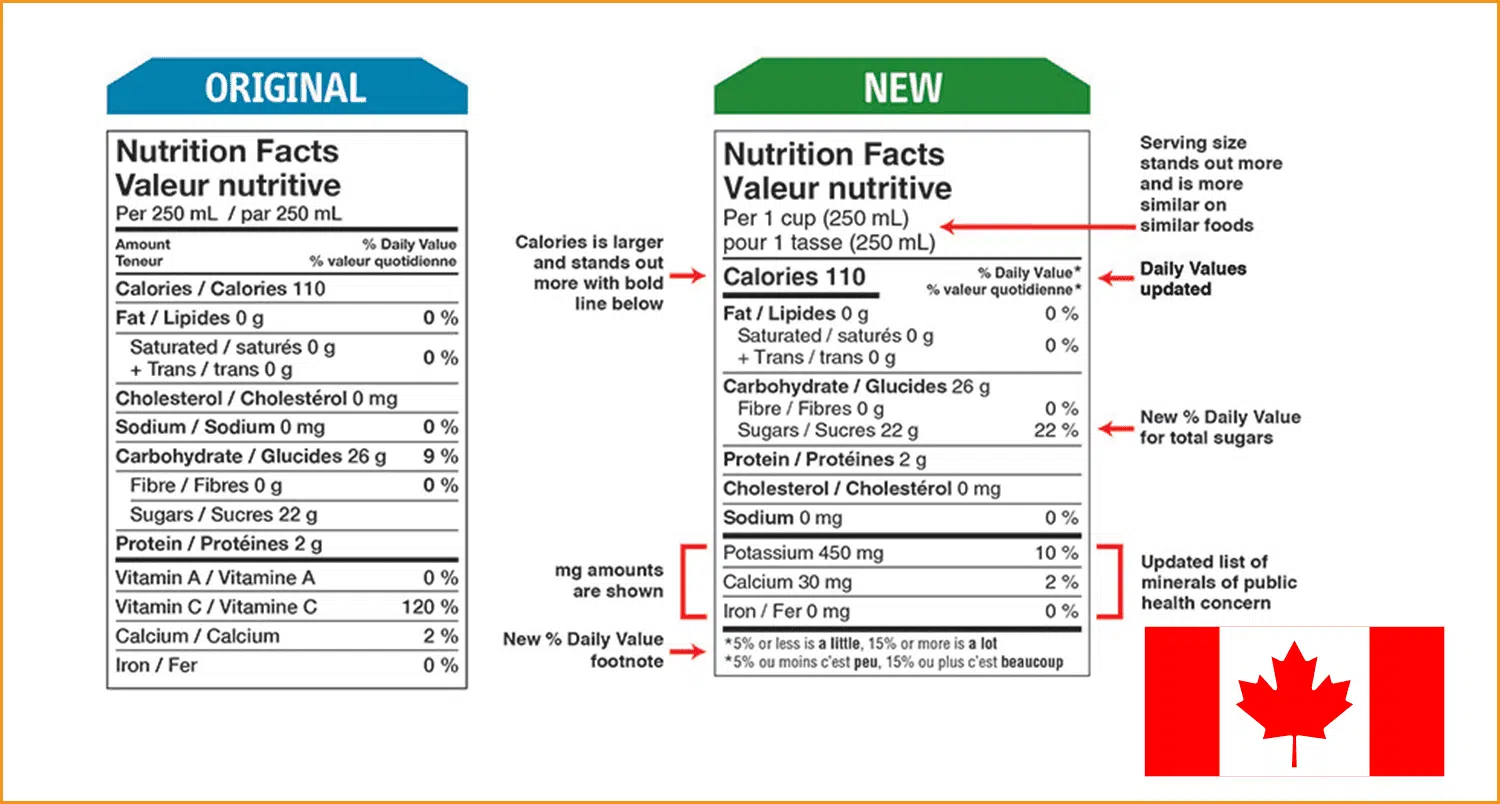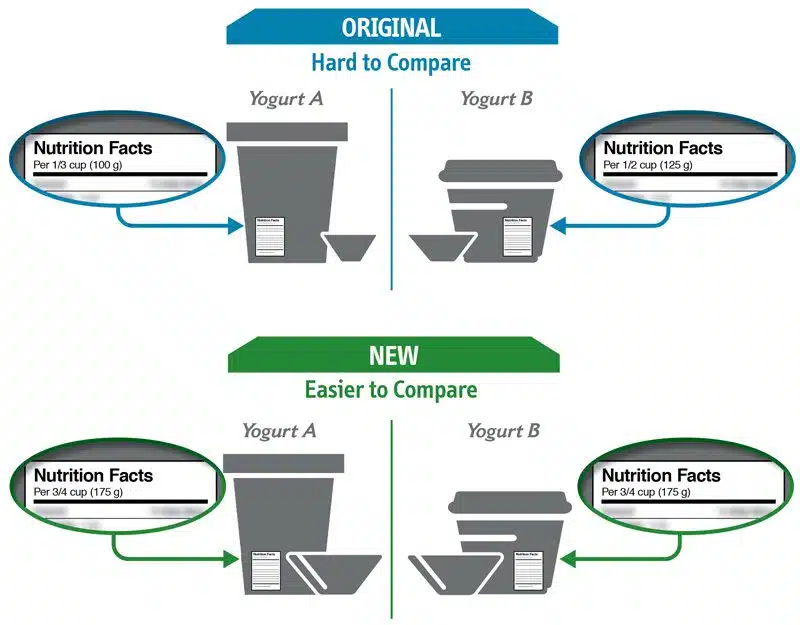
In the food and beverage industry, the nutrition facts table is an important part of the product label. Displayed directly on your product, the Canadian Nutrition Facts table (US, European, etc.) must be accurate and updated to governmental changes.
If you are a consumer or business owner, it is important to understand and use the nutrition facts label correctly. Therefore, hand-in-hand with the ingredient listing, the nutrition facts table is required on most packaged foods in many countries.
Changes to the Canadian Nutrition Facts Table
On December 14th, the Canadian FDA announced changes to be made to their nutrition facts table.
So, they released a statement regarding these major upcoming changes, explaining, “We’re making improvements to the nutrition facts table and list of ingredients on food labels based on feedback from Canadians and stakeholders. The food industry has a transition period of 5 years to make these changes. This means that you might start seeing new food labels as early as 2017.”
Some of the major label changes include:
- Serving size more consistent to easily compare to similar foods & know how many calories and nutrients are being consumed
- Increased calorie font size
- New % daily value, % daily sugars value, and footnote
- Clearly defined list of sugars included within the ingredient list
You can review the full article statement here.
So what does this mean to you?
There will be a much greater need for the flexibility of changing, altering, and updating label information on demand.
So who does this affect?
If you are a food/beverage industry business owner in Canada, these Canadian Nutrition Facts changes will affect your production line, label design and product distribution overall. However, this change is not limited to Canadian businesses.
So, if you are a global company and/or a company who distributes products to Canada, all labels containing the nutrition facts table must change to adhere to the new Canadian FDA rulings.
How can you make these adjustments easier on your business?
It’s simple. With the need for specific, on-demand labels you will require private labeling.
Although, the only downfall to this is the additional expenses that come with outsource label companies, including shipping time and labeling errors.
If this is a concern, an in-house color label printer is your solution.
Using your own color label printer will allow you to make these changes to your product labels in your own facility, saving you the time and money spent on outsourcing.
With label values, listings, and percentages becoming more specific, owning your own label printer will let you make changes to your labels or create new ones on your own production line.
Because these changes are coming soon. Getting a head start on such a significant change is never a bad idea.
Learn more about quality on-demand color label printer options today.
Don’t forget to follow us on Twitter, like us on Facebook, and connect with us on LinkedIn.





